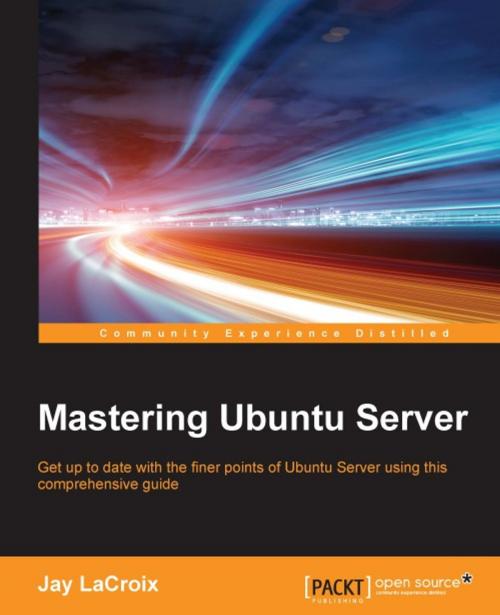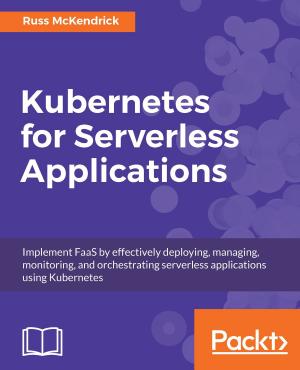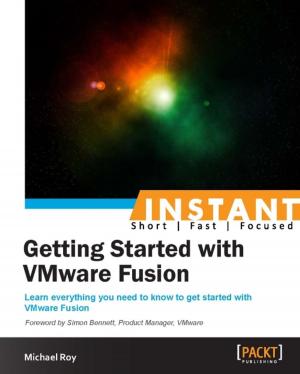Mastering Ubuntu Server
Nonfiction, Computers, Database Management, Client-Server Computing, Operating Systems, Unix, Linux| Author: | Jay LaCroix | ISBN: | 9781785287138 |
| Publisher: | Packt Publishing | Publication: | July 27, 2016 |
| Imprint: | Packt Publishing | Language: | English |
| Author: | Jay LaCroix |
| ISBN: | 9781785287138 |
| Publisher: | Packt Publishing |
| Publication: | July 27, 2016 |
| Imprint: | Packt Publishing |
| Language: | English |
Get up to date with the finer points of Ubuntu Server using this comprehensive guide
About This Book
- Get well-versed with newly-added features in Ubuntu 16.04
- Master the art of installing, managing, and troubleshooting Ubuntu Server
- A practical easy-to-understand book that will help you enhance your existing skills.
Who This Book Is For
This book is intended for readers with intermediate or advanced-beginner skills with Linux, who would like to learn all about setting up servers with Ubuntu Server. This book assumes that the reader knows the basics of Linux, such as editing configuration files and running basic commands.
What You Will Learn
- Learn how to manage users, groups, and permissions
- Encrypt and decrypt disks with Linux Unified Key Setup /Luks
- Setup SSH for remote access, and connect it to other nodes
- Understand how to add, remove, and search for packages
- Use NFS and Samba to share directories with other users
- Get to know techniques for managing Apache and MariaDB
- Explore best practices and troubleshooting techniques
In Detail
Ubuntu is a Debian-based Linux operating system, and has various versions targeted at servers, desktops, phones, tablets and televisions. The Ubuntu Server Edition, also called Ubuntu Server, offers support for several common configurations, and also simplifies common Linux server deployment processes.
With this book as their guide, readers will be able to configure and deploy Ubuntu Servers using Ubuntu Server 16.04, with all the skills necessary to manage real servers. The book begins with the concept of user management, group management, as well as file-system permissions. To manage your storage on Ubuntu Server systems, you will learn how to add and format storage and view disk usage. Later, you will also learn how to configure network interfaces, manage IP addresses, deploy Network Manager in order to connect to networks, and manage network interfaces. Furthermore, you will understand how to start and stop services so that you can manage running processes on Linux servers. The book will then demonstrate how to access and share files to or from Ubuntu Servers. You will learn how to create and manage databases using MariaDB and share web content with Apache. To virtualize hosts and applications, you will be shown how to set up KVM/Qemu and Docker and manage virtual machines with virt-manager. Lastly, you will explore best practices and troubleshooting techniques when working with Ubuntu Servers.
By the end of the book, you will be an expert Ubuntu Server user well-versed in its advanced concepts.
Style and Approach
This book is an advanced guide that will show readers how to administer, manage, and deploy Ubuntu server and will also provide expert-level knowledge on advanced security and backup techniques.
Get up to date with the finer points of Ubuntu Server using this comprehensive guide
About This Book
- Get well-versed with newly-added features in Ubuntu 16.04
- Master the art of installing, managing, and troubleshooting Ubuntu Server
- A practical easy-to-understand book that will help you enhance your existing skills.
Who This Book Is For
This book is intended for readers with intermediate or advanced-beginner skills with Linux, who would like to learn all about setting up servers with Ubuntu Server. This book assumes that the reader knows the basics of Linux, such as editing configuration files and running basic commands.
What You Will Learn
- Learn how to manage users, groups, and permissions
- Encrypt and decrypt disks with Linux Unified Key Setup /Luks
- Setup SSH for remote access, and connect it to other nodes
- Understand how to add, remove, and search for packages
- Use NFS and Samba to share directories with other users
- Get to know techniques for managing Apache and MariaDB
- Explore best practices and troubleshooting techniques
In Detail
Ubuntu is a Debian-based Linux operating system, and has various versions targeted at servers, desktops, phones, tablets and televisions. The Ubuntu Server Edition, also called Ubuntu Server, offers support for several common configurations, and also simplifies common Linux server deployment processes.
With this book as their guide, readers will be able to configure and deploy Ubuntu Servers using Ubuntu Server 16.04, with all the skills necessary to manage real servers. The book begins with the concept of user management, group management, as well as file-system permissions. To manage your storage on Ubuntu Server systems, you will learn how to add and format storage and view disk usage. Later, you will also learn how to configure network interfaces, manage IP addresses, deploy Network Manager in order to connect to networks, and manage network interfaces. Furthermore, you will understand how to start and stop services so that you can manage running processes on Linux servers. The book will then demonstrate how to access and share files to or from Ubuntu Servers. You will learn how to create and manage databases using MariaDB and share web content with Apache. To virtualize hosts and applications, you will be shown how to set up KVM/Qemu and Docker and manage virtual machines with virt-manager. Lastly, you will explore best practices and troubleshooting techniques when working with Ubuntu Servers.
By the end of the book, you will be an expert Ubuntu Server user well-versed in its advanced concepts.
Style and Approach
This book is an advanced guide that will show readers how to administer, manage, and deploy Ubuntu server and will also provide expert-level knowledge on advanced security and backup techniques.















